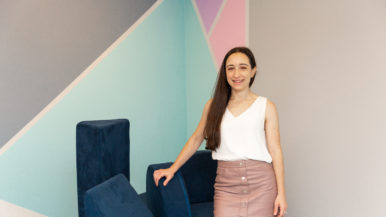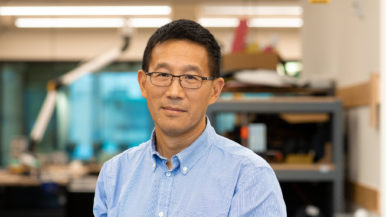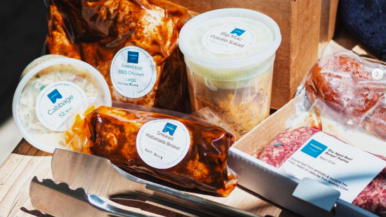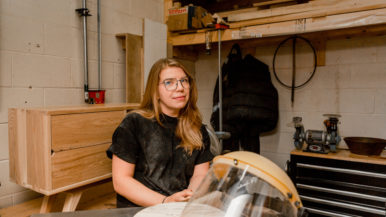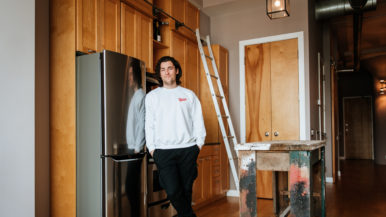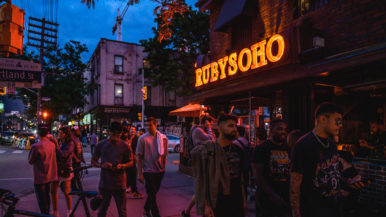“At Sunnybrook, we have people who are superheroes without the capes”: A Q&A with Rob Kozak, one of the Toronto doctors who isolated coronavirus 2

Last week, a team of researchers—doctors Samira Mubareka and Rob Kozak of Sunnybrook and U of T, and Dr. Arinjay Banerjee of McMaster—managed to isolate severe acute respiratory syndrome coronavirus 2 (SARS-CoV-2), the virus responsible for the ongoing outbreak of the Covid-19 disease. The isolated virus will now help researchers around the world develop diagnostic testing, treatments and vaccines. We talked to Kozak about how that isolation works, when we might get a vaccine, and why he’s still an optimist.
Thanks for taking the time to talk to Toronto Life during what must be an incredibly busy time. You and your team must be very tired right now.
I’m definitely pushing my daily coffee limit. I used to just have one in the morning, and now it’s one in the morning, one at lunch, one in the afternoon, one in the evening. I need to find a way to just infuse it directly.
Can you explain to me, in terms that my seven-year-old son might understand, what it means to “isolate” SARS-CoV-2?
Let’s say you were infected. You would come into the hospital, and we would do a molecular test that says, yep, you’ve got SARS-CoV-2. But we haven’t taken the virus out of you; we’ve just shown that the genome is there. What we did is we took some of a patient’s sample and added it to a scientific cell line, which allowed the virus to get into the cells and replicate and grow. So it’s doing the exact same thing it would do in your body except it’s doing it in a controlled environment where we can then harvest the virus. And now we have the virus outside the body, in a tube, that we can use to test antivirals or for vaccine studies. It’s outside the patient and we can experiment on it.
So you were basically trying to culture, or create, the virus while the rest of us have been trying to stay very far away from it?
We do it in a high-containment lab, of course, with lots of personal protective gear. But yeah, that’s the gist.
What can you, or the broader medical community, do with the virus now that it’s isolated?
Lots of stuff. I’m working with groups in Quebec and Saskatchewan on vaccine development. Now that we have the virus we can vaccinate animals and test how well the vaccine protects them. We’re also looking into developing therapeutics that might work. That’s what I have my hands on, but we’re going to have lots of other people who are going to be able understand this virus in great detail. You put it out to all the experts, and every expert brings their perspective to it, and we find out something new. People ask questions I would have never thought of asking.
What makes this virus different from, say, SARS?
If you compare the genome of this virus to SARS, they’re only about 80 per cent similar. They’re cousins. They’ve got a lot in common—they use the same receptors to get in on a human cell—but they’ve got a lot of differences, too. That’s one of the reasons why we want to isolate the virus. Because when we start doing experiments, looking at how exactly it affects cells, or putting it in an animal model, you’d be able to tease out the differences between SARS 1 and SARS 2.
You isolated the virus pretty fast. Was that unusual?
I’ve worked on a lot of different viruses throughout my career, and this one we got pretty quick—a couple of weeks. We were lucky that the postdoc working with us, Arinjay Banerjee, has, like, magic hands—he’s just really, really good.
Magic hands?
It’s a saying we use quite a bit in the lab. It means he’s skilled at working in a demanding environment and is very meticulous in his work, which usually results in success. He also brought some experience with him—he worked with the MERS coronavirus. We also reached out to a lot of colleagues all over the world, and people were great at sharing advice and recommendations. We talked to a group in Australia who had also isolated the virus, and they said, “Oh, you should try this.” It’s like baking a cake—they’ve got their recipe and you tweak it a little bit, so your chocolate cake is a little different from theirs, but it’s kind of the same.
How quickly do you think we’ll get those therapeutics you mentioned, or even a vaccine?
From the vaccine perspective, there are a lot of people putting money into it—the National Institutes of Health in the U.S., and a few other coalitions. I think people are hoping that there might be some candidate vaccines that we can do trials on by the end of the year. I’m an optimist, so I’m going with that. But if not then, then in about a year and a half. Some of my colleagues are gearing up for clinical trials on therapies. We’ll know sooner if the antivirals that they’re looking at work before we know about a vaccine. But we obviously need both.
How did you get into this line of work?
I did my PhD on tuberculosis, and I liked working in high-containment labs. After that I went out to the national lab in Winnipeg and worked with Ebola and Zika. The fact that these emerging pathogens can often be global threats makes the work very relevant.
And very rewarding.
Yeah, it’s great. You really get to see immediate impact with some of the stuff we’re doing.
What do you think of Canada’s response to the pandemic?
I couldn’t really comment other than what I see in my immediate surroundings. But I see all the people I work with giving 110 per cent. At Sunnybrook, you have people who are superheroes without the capes. We’ve pushed to get testing up and running at the lab I work in. And the people on the front lines are giving their all. The recommendations for things like social distancing are important. And again, I’m ever the optimist. I think Canadians are smart people. They’re going to do the right thing and we’re going to do our best to flatten that curve.
